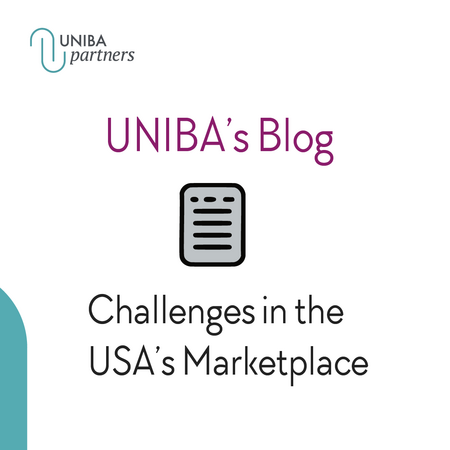UNIBA’s Blog: Challenges to consider in the USA’s 2024 Marketplace
11 April 2024

Welcome to UNIBA’s Blog – your go-to source for the latest insights into the world of insurance. In this edition, we delve into the largest insurance market in the world, the United States of Americas, the destination for our upcoming Americas Regional Conference on 28-30 April.
With the United States of America being the largest insurance market in the world, chances are that you all have dealings with and in the USA. Marisa Lagos, Vice President and International Placement Specialist Commercial Lines at our American Partner Insurance Office of America, talks to us about the property and casualty market and what to look out for.
The Property Market – Watch Out for La Niña
While the property market remains challenging, it has softened slightly, so the exponential rate increases are hopefully behind us. Large property towers in non-CAT exposures can expect single-digit rate increases upon renewal. While CAT-exposed properties might not experience the same relief, new capacity is entering the market, but it is too early to tell how this will affect its competition. Particularly in the southeastern United States, this softening property market will depend on the results of the 2024 hurricane season, which ranges from June 1st to November 30th. Unfortunately, it is shaping up to be a la Nina summer. That means hotter than average sea surface temperatures in the Atlantic, increasing hurricanes' likelihood and strength. Large CAT losses this year would further reduce East Coast CAT exposure capacity and make late 2024 and 2025 property renewals that much more difficult.
The Casualty market – Rising Cost of Litigation
While the current casualty market has a strong competitive landscape with plenty of capacity for most industries, long-tail classes, including residential construction, habitational, and large trucking/auto-based risks, continue to face a firm and unpredictable market. However, there are some trends that insurance carriers are watching that could affect casualty lines down the road. Social Inflation, Nuclear Verdicts, and Third-Party Litigation Funding have adversely affected casualty losses for several years. Still, it impacts treaty renewals as reinsurers try to keep pace with these trends and the upward pressure on rates.
What is social inflation?
“Social inflation” refers to increased negative perceptions of large corporations by the American public, including insurance carriers. According to the National Association of Insurance Commissioners, this phenomenon corresponds with increased high-dollar lawsuits and settlements that have caused carrier claims to skyrocket. In a recent survey conducted by AM Best, casualty insurers are concerned that social inflation and rate adequacy will lead to higher reinsurance costs and tightened conditions on casualty lines like general liability, commercial auto liability, professional and management liability, and cyber liability.
What are Nuclear Verdicts?
Nuclear verdicts are lawsuit awards that exceed $10 Million. The anti-corporate sentiment has influenced juries and judges to sympathize with plaintiffs and award larger settlements. The public believes that businesses and insurance companies can afford to pay these high-dollar settlements without understanding that large payouts directly influence them and their personal insurance as well. The 2023 Conning Report even contributed nuclear verdicts with making up 26% of the inflation rate in the US over the past few years.
What is third party litigation financing?
Third-party litigation funding (TPLF) refers to the growing practice of a party with no direct stake in a lawsuit funding the plaintiff and the plaintiff’s lawyers as they pursue litigation. Since this industry remains unregulated at the state and federal levels, it is unknown exactly how much is loaned annually. Conservative estimates are around $2.3 Billion in funding, while other studies place it at $5 Billion. TPLF changes the equation for the USA’s justice system. The goal is no longer achieving justice but maximizing the return on investment for the TPLF. This is leading TPLFs to have undue influence over cases. For example, Burford Capital, a TPLF, invested $140 million in Sysco Corporation’s price-fixing litigation against meat producers. Although Burford claims that they “do not control strategy or settlement decision-making,” when Sysco tried to settle its claims with the meat producers without needlessly protracting the costly litigation, Burford objected and sought to block settlements that it considered insufficient. It may sound shocking that an outside entity could reject another corporation’s settlement agreement because it would not make them enough profit, but unfortunately, this is now commonplace.
What does this mean for clients?
All of these factors contribute to our recommendations to clients to increase their excess casualty limits now while pricing and capacity are somewhat favorable. If a client has a claim that ends up in court, they need high enough limits to protect their company’s assets. On the flip side, Insurance companies are settling claims with limited negotiation to avoid going to court. Unfortunately, this means larger claims payouts that will directly impact your client’s loss ratios and renewal premiums. The Institute for Legal Reform released a recent report that showed that from 2010-2019, the media aberration verdict increased from $19.3 Million to $24.6 Million. This payout increase has driven down carrier capacity for any one account, making it more difficult and expensive to build the towers needed to protect against nuclear verdicts. In some cases, carriers have gone from $25M down to $10M in deployed capacity on single deals, ultimately reducing coverage to $5M or less for accounts they were in a lead position. This reduction in capacity is projected to continue as more cases are settled as courts work through the backlog from COVID-19.
Conclusion
Navigating the complexities of the United States insurance market requires a keen understanding of evolving risks and trends. The property market shows signs of softening, albeit with uncertainties hinging on the upcoming hurricane season. Meanwhile, the casualty market remains firm and unpredictable, exacerbated by social inflation, nuclear verdicts, and third-party litigation funding. These factors necessitate proactive measures for both insurers and clients. Increasing excess casualty limits is advisable to shield assets amid rising settlement costs, while insurers face challenges in maintaining adequate capacity. As the landscape continues to shift, staying informed and adapting strategies accordingly will be pivotal in effectively mitigating risks and securing favorable outcomes for all stakeholders. As we anticipate the UNIBA Partners' annual Americas Regional Conference in April, stay tuned for more updates.


